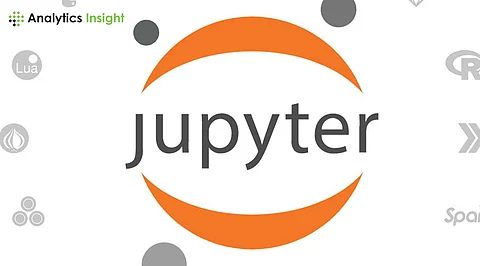

Python is utilized by Data Scientists and Machine Learning Engineers worldwide. It is profoundly ideal for preparing and building datasets for different day-to-day ML calculations, both directed and unsupervised. In any case, which stage do most ML devotees favor when working with Python? The reply is Jupyter Notebook.
Jupyter Notebook is the ideal place to run your Python extend codes and get your well-running yields. It is one of the 10 most utilized IDEs, beating Radiant Content and Eclipse. Its cell-by-cell structure makes it simple to comprehend and partition distinctive portions of the code while running it as an entirety. Master the art of coding and visualization with our detailed instructions on how to use Jupyter Notebook.
Here are a few Jupyter Notebook Tips and Tricks for Data Science. Through these tips, one can answer the question of how to use Jupyter Notebook.
As illustrated here, you can utilize it to execute Shell and Bash commands inside the Jupyter Notebook cell. It gives you extra capability to use tools and commands based on Linux or Unix. Introducing Python libraries meanwhile on the go is the most common utilization for this command. You can introduce a few Python bundles like Pandas, Numpy, and Keras. This tip will be profoundly advantageous for you to introduce and consequence a few valuable Python packages as you keep working on your Machine Learning and Data Science ventures. Envision importing tons of functionalities in one go and moving forward with your Jupyter Notebook experience.
If you are working on a Data Science or Machine Learning venture, a particular area of your code will be saved for plotting visualizations such as charts and multivariate measurements. You can plot in your Jupyter Notebook in various ways.
Plot.ly, a once-paid benefit that is presently open-sourced, can deliver a few alluring plots.
Seaborn actuates Matplotlib, the de-facto standard, which is built on the best of Matplotlib and encourages the creation of more visually engaging plots. Without changing any code, you can make your matplotlib charts “prettier” only by bringing in Seaborn.
For matplotlib code, ‘mpld3’ offers a substitute renderer (utilizing d3). It’s exceptionally productive but needs a few details.
For Python, ‘Altair’ is a moderately modern explanatory visualization bundle. It is essential to utilize and produce excellent plots, even though it needs Matplotlib’s level of customization capability.
By utilizing these tips, you will be able to plot a few visualizations in your Python codes, such as comparison charts, information outlines, exactness measurements, and more.
Images, recordings, and audio may all be seen without the need to introduce additional Python packages. To access the Picture, Video, and Sound highlights, purport IPython.display. Working with unstructured data and machine learning applications is exceptionally supportive. So go ahead and appreciate the completely utilitarian multimodal capabilities advertised by Jupyter Notebook. This usefulness will take your Data Science ventures to another level.
Any Notebook user will tell you that keyboard shortcuts can save you a lot of time. Access Jupyter's keyboard shortcuts via the Help > Keyboard Shortcuts menu at the top or by pressing H to enter command mode. It’s imperative to check this each time you update Jupyter since new shortcuts are continuously introduced.
A VSCode-like command palette is the most helpful and broadly utilized strategy for rapidly accessing commands on the run. The command palette can be accessed by clicking Ctrl + Move + P. You can use it to search and run commands or to browse through all of the commands and discover the one you need to run.
Most of the IPython magic commands are included in the Jupyter Notebook. You can execute the code with extra capabilities that are much obliged to these commands.
A single line of code can have extra usefulness, which is included with the assistance of line magic commands, which begin with ‘%’ and end with the line command. Run “%lsmagic” to see all available enchantment commands; this command will show all accessible magic commands.
Join our WhatsApp Channel to get the latest news, exclusives and videos on WhatsApp
_____________
Disclaimer: Analytics Insight does not provide financial advice or guidance. Also note that the cryptocurrencies mentioned/listed on the website could potentially be scams, i.e. designed to induce you to invest financial resources that may be lost forever and not be recoverable once investments are made. You are responsible for conducting your own research (DYOR) before making any investments. Read more here.
